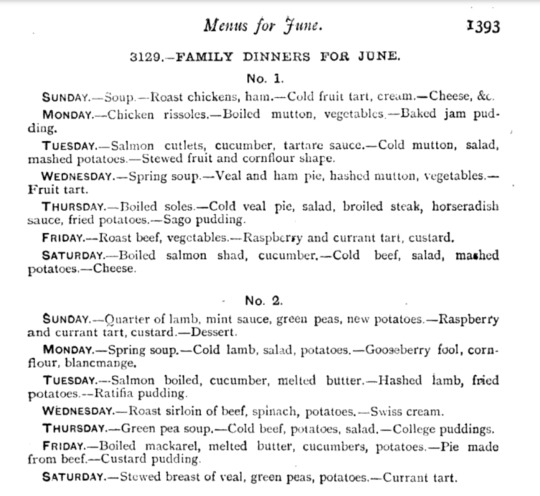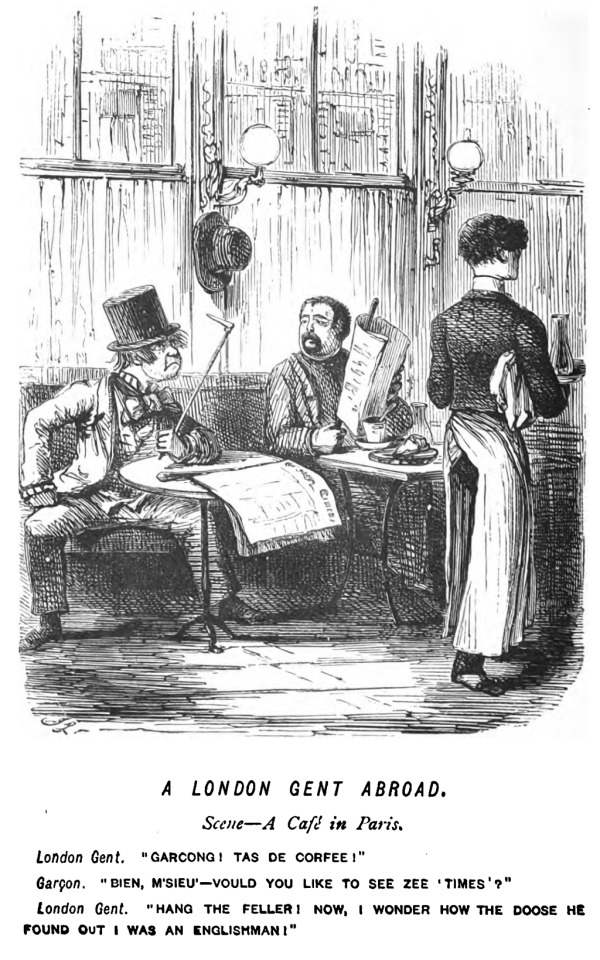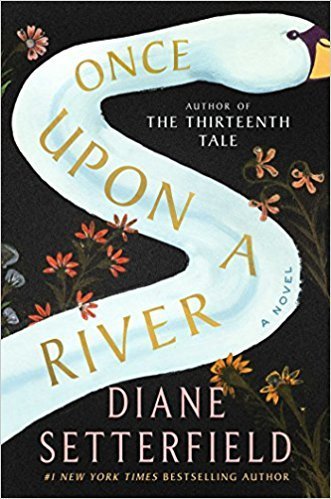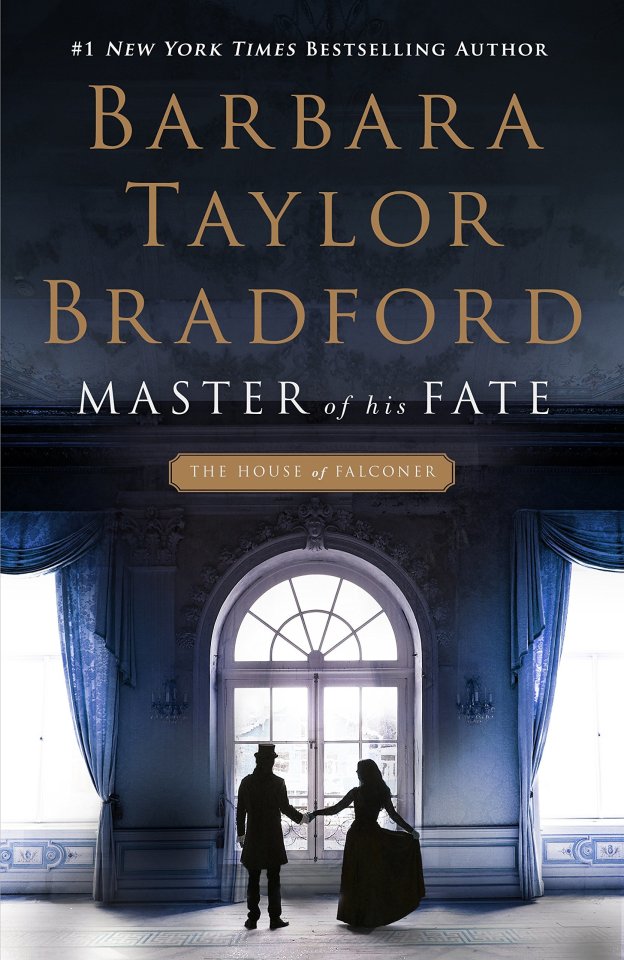#Victorian cookery
Text

from Mrs. Beeton's Book of Household Management by Isabella Beeton (orig. published 1861; above from the 1888 edition)
#mrs beeton's book of household management#mrs beeton#isabella beeton#victorian era#19th century#food history#antique cookbook#cookbook#victorian food#victorian cookery#19th century food#historical cooking#victorian cooking#history#old cookbook
9 notes
·
View notes
Text

During most of the 20th century, coffee was considered a rather poncy drink. When “instant” came in, the selling point was that people who’d never really bothered with it before could make it much more quickly than tea - and take a step upwards socially at the same time.
It wasn’t the case during the Victorian period. From its early days in the coffee houses, the beverage had migrated out onto the street. It was never made the way we do now: mostly we are told to boil the grounds. For ten minutes.
https://www.patreon.com/posts/coffee-73340494
#cooks#streetlife#street food#victorian era#london#coffee#Victorian cookery#1800s#19th century#cookery#cookery books#cookbook#coffee station
0 notes
Note
What do you think Henry's favourite dessert is?
This time of year it’s custard pudding! It’s basically eggs, cream and gelatin with a splash of orange flower water. By itself it’s pretty bland, but it’s served with a black current jam, and is very pleasant.
It’s very reminiscent of his favorite dessert in the summer, being berry pie and vanilla icecream, but berries aren’t in season in March and it’s cold outside, so he prefers the custard.
#*me sitting amongst piles of historical cookbooks* well funny you should ask-#In other things he’s fond of: spiced cakes like ginger bread carrot cake cinnamon and cardamom caramel almond or peanut based things-#hot chocolate which in Victorian context is not technically a dessert as it fills a similar role to coffee and various candied fruits#“The art of cookery” a 1774 cookbook by Hannah Glasses had a recipe for “nut bomboons” made with#Which is a recipe Agatha liked to make except she doesn’t follow recipes#So she dumps caramel over peeled almonds or peanuts which is actually incredibly good and everyon in the institute loved it#Anyways icecream is a superior dessert and custard is in the same family#Note the difference between custard pudding and most victorian puddings which he’s not particularly fond of#Tid#tsc#Tlh#henry fairchild#henry branwell
13 notes
·
View notes
Text
It is well known that some persons like cheese in a state of decay, and even 'alive'. There is no accounting for tastes, and it may be hard to show why mould, which is vegetation, should not be eaten as well as salad, or maggots as well as eels. But, generally speaking, decomposing bodies are not wholesome eating, and the line must be drawn somewhere.
-- Page 95, Isabella Beeton, "The Campaign for Domestic Happiness"
#isabella beeton#the campaign for domestic happiness#victorian#victorian food#mrs beeton's book of household management#cookery#cheese#historical cooking#food history
0 notes
Text
In the years before the [Indian] Mutiny, when utilitarians like Macaulay and James Mill were busily trying to assimilate India into the British Empire and Anglicizing it through educational and legal reforms, British women undertook an analogous task. They incorporated Indian food, which functioned metonymically for India, into the national diet and made it culturally British.
Nupur Chaudhuri has already detailed the material practices of Victorian memsahibs who helped to diffuse curry and rice into the national diet, thereby functioning as "agents of cultural exchang between colonizers and colonized." However, Victorian women were not only "agents of cultural exchange" but were invested by domestic ideology with the powers of moral agency, which [...] allowed them to undertake the ideological work of domesticating imperialism. It is the "good" Victorian woman's moral agency and figurative power to domesticate the foreign that this essay traces through cookbooks and curry recipes. [...] [N]ineteenth-century domestic cookery books are self-conscious cultural documents in which we can locate a metaphor for nineteenth-century British imperialism, in which the Other presents itself not as a source of threat and contamination but of nourishment. By virtue of their own domesticity, Victorian women could neutralize the threat of the Other by naturalizing the products of foreign lands.
Susan Zlotnick, "Domesticating Imperialism: Curry and Cookbooks in Victorian England." Frontiers: A Journal of Women Studies 16.2/3 (1996), pp. 51-68.
206 notes
·
View notes
Text


Beautiful semi-detached 1890 Victorian in Savannah, Georgia. 4bds, 4ba, $1.3M and it's already under contract.


The 1st fl. has been modernized, but they left the lovely colored glass windows and original fireplace.

The living room has pocket doors and goes directly into the expanded kitchen that has been remodeled.


It appears that a wall was removed - you can see the crossbeam is supported by a column. They have it blocked by a rolling kitchen island, but there's a great fireplace in here, with some cookery on the mantle.

Even though they expanded, the kitchen is still a little small, but at least it didn't encroach on the fireplace.

Redone bath with a space for the washer/dryer is always a welcome addition.

This fresh and bright bedroom could be the primary, but it's hard to tell.



It's amazing how beautifully plants make a home. Why can't I do this? I'm lucky I'm only down to four that are still thriving. This is a single family home, but it looks like it was originally a 2 family and this is the upstairs living room.


There's a lovely bedroom up here with a fireplace.

A nice bath.

There's another kitchen up here, so it was definitely a 2 family. I don't know, the realty ad says it's a single family, but it looks like this is someone's apt. Even the decorating style is different.


Another lovely bedroom.

I think that the real estate is wrong, this is definitely a 2 family- there's another washer/dryer up here, too.

Actually, there's even a 3rd apt. in the finished attic.

The beams, roof line, and exposed brick are wonderful up here.

Cute little child's play area.


Cute kitchen.

Nice bedroom, too.

The patio's a little crumbly, but there's a lovely pergola and space for some lawn and gardens.
114 notes
·
View notes
Text
Christmas pudding [...] [is] a boiled mass of suet - a raw, hard animal fat [...] often replaced with a vegetarian alternative - as well as flour and dried fruits that is often soaked in alcohol and set alight. [...] [I]t is a legacy of the British Empire with ingredients from around the globe it once dominated [...].
Christmas pudding is a relatively recent concoction of two older, at least medieval, dishes. [...] “Figgy pudding,” immortalized in the “We Wish You a Merry Christmas” carol, appeared in the written record by the 14th century. [...] During the 18th century, the two ["plum pottage" and "figgy pudding"] crossed to become the more familiar plum pudding – a steamed pudding packed with the ingredients of the rapidly growing British Empire of rule and trade. The key was less a new form of cookery than the availability of once-luxury ingredients, including French brandy, raisins from the Mediterranean, and citrus from the Caribbean.
Few things had become more affordable than cane sugar which, owing to the labors of millions of enslaved Africans, could be found in the poorest and remotest of British households by mid-century. Cheap sugar, combined with wider availability of other sweet ingredients like citrus and dried fruits, made plum pudding an iconically British celebratory treat, albeit not yet exclusively associated with Christmas.
Such was its popularity that English satirist James Gillray made it the centerpiece of one of his famous cartoons, depicting Napoleon Bonaparte and the British prime minister carving the world in pudding form.

In line with other modern Christmas celebrations, the Victorians took the plum pudding and redefined it [...], making it the “Christmas pudding.” In his 1843 internationally celebrated “A Christmas Carol,” Charles Dickens venerated the dish as the idealized center of any family’s Christmas feast [...].
Three years later, Queen Victoria’s chef published her favored recipe, making Christmas pudding, like the Christmas tree, the aspiration of families across Britain.
Christmas pudding owed much of its lasting appeal to its socioeconomic accessibility. Victoria’s recipe, which became a classic, included candied citrus peel, nutmeg, cinnamon, lemons, cloves, brandy and a small mountain of raisins and currants – all affordable treats for the middle class. Those with less means could either opt for lesser amounts or substitutions [...]. Eliza Acton, a leading cookbook author of the day who helped to rebrand plum pudding as Christmas pudding, offered a particularly frugal recipe that relied on potatoes and carrots. [...] The high alcohol content gave the puddings a shelf life of a year or more, allowing them to be sent even to the empire’s frontiers during Victoria’s reign [...].
---
In the 1920s, the British Women’s Patriotic League heavily promoted it – calling it “Empire Pudding” in a global marketing campaign. They praised it as emblem of the empire that should be made from the ingredients of Britain’s colonies and possessions: dried fruits from Australia and South Africa, cinnamon from Ceylon, spices from India and Jamaican rum in place of French brandy.
Press coverage of London’s 1926 Empire Day celebrations featured the empire’s representatives pouring the ingredients into a ceremonial mixing bowl and collectively stirring it.
The following year, the Empire Marketing Board received King George V’s permission to promote the royal recipe, which had all the appropriate empire-sourced ingredients. Such promotional recipes and the mass production of puddings from iconic grocery stores like [Sains-bury's] in the 1920s combined to place Christmas puddings on the tables [...].
---
All text above by: Troy Bickham. "How the Christmas pudding, with ingredients taken from the colonies, became an iconic British food." The Conversation. 8 December 2023. [Bold emphasis and some paragraph breaks/contractions added by me. Image and caption shown unaltered as they appear published by Bickham along with the article's text.]
55 notes
·
View notes
Text
Thank You For Our Pornography!
This is a 2024 Smut War meta.
So you don't think the meta writers know how to sharpen their pencils for the sake of smut? My friend, you need to be like Gabriel and Sandalphon and get your hands on some those "material objects" and get yourself an education. It's under the cut.


And so he is.
That thicc book Gabriel has his hands around, Mrs Beeton's Book of Household Management, is a well known book that was first printed in 1861. The version Gabriel is holding is apparently a full 2,000 page modern version, as it was still in print in 2016. It is largely a cooking book, but carries a range of advice on how to shop and serve the food for a Victorian household and how to manage servants.

So Gabriel could use this book to learn any of the below cookery related actions, which are also used as euphemisms for sex:
Putting the bread in the oven
Churning butter
Baking the potato
Shucking oysters
Filling the cream donut
Having hot pudding for supper
Buttering the biscuit
Greasing the loaf pan
Sending out for sushi...
OK, so maybe they didn't have sushi back in 19th century London, but they sure do have it today, and since most of the food references in GO can also be seen as sex metaphors, Shax is delivering a pointed reminder here during her roasting of Aziraphale:

What was that expression on your face for just then, Aziraphale?
Not thinking of all those lunches Crowley tempted you into having?

By the looks of it, Gabriel would rather just watch the intoxicating liquor...

Anyway, I hope Gabriel does use his investment in the future, perhaps to make a tasty bit of crumpet, where ever he is with Beelzebub.

#good omens#good omens meta#ineffable smut war#smut war#good omens after dark#goad#gabriel#sandalphon#aziraphale#crowley#shall we send up the sushi?#can i tempt you to a spot of lunch?#you don't actually have to consume
46 notes
·
View notes
Note
Horror of horrors! I let my 19th century man take a Grand Tour for enrichment purposes, but he has, unfortunately, now arrived in Italy. He has begun eating—GARLIC! In most of his meals. How am I supposed to convince him to drop this deplorable habit when even the ladies in Italy eat garlic? Please help me save my Man from the cruelest of fates—becoming Italian!!!
Hope is not lost! There's a lot more information I need to know before I can give you my condolences for hearing the dirge of the organ-grinder.
While today we think of Englishmen as being harmed by garlic and sunlight, and unable to enter a residence without a proper invitation—historically they have eaten a spicier diet, with Indian influences like Mulligatawny Soup from over 200 years ago. It's the late Victorian types (ironically raised on imperialist adventure fiction for boys) who need their plain toast cut into pieces before they can consume it.
An earlier 19th century Englishman might be a fan of celebrity chef William Kitchiner. The 1822 (fourth) edition of his Cook's Oracle sings the praises of "the Whip and Spur that Students of long standing in the School of Good Living are generally so fond of enlivening their palate with, i.e. Cayenne and Garlick" and has many spicy and garlicy recipes.
As The Practical Cook, English and Foreign of 1845 acknowledges, "there is scarcely an English family among the higher or middle classes, who does not number among its members a retired military or civil servant of the East India Company" and he probably has a taste for Anglo-Indian cookery, so the book has a whole chapter. Your early-mid 19th Englishman enjoys a variety of ethnic cuisines and may even relish an Irish stew!
Here is another possibility: could your "English" man actually be French? You might not think of this prospect, but the reality is there are a lot of 19th century French anglophiles who love their redingotes and twine anglais. Every 19th century man aspires to speak la langue de Molière—but when he orders a cup of coffee on his trip to Paris, does the waiter give him a knowing nod and bring him Le Charivari with his beverage, or start speaking English and offer him The Times?

Even in the latter case, he may have only developed an unfortunate predilection for the pungent allium. It's not that uncommon for a 19th century man to enjoy piquant recipes—yes, even if he's English.
You can try offering him a variety of foods to break him from this Mediterranean passion, as he may find that less highly spiced foods agree more with his digestion (which will be true especially as he ages).
#is the 19th century man okay#food#garlic#mid 19th century#early 19th century#cookbooks for the 19th century man#asks#john leech my beloved
54 notes
·
View notes
Text
Fish and Chips’ Surprising Jewish History

Jamie Oliver confirmed it!
You may be surprised to learn that fish and chips, though wildly popular in England for what seems like eternity, was actually a specialty of the Portuguese Sephardic Jews who fled the Inquisition in the 16th century and found refuge in the British Isles. Celebrity Chef Jamie Oliver referred to this recently in an article in the New York Times, adding that, “Dishes evolve, impacted by trade, war, famine and a hundred other forces.”
Among those “other forces” are dishes born of religious ritual. For observant Jews, fish is pareve, a neutral food in kosher terms, thus an easy way to avoid treyf (non-kosher food) and possibly include dairy in the same meal. It was especially important for Marranos, the so-called crypto-Jews, who pretended to be Christian during the Inquisition. They ate fish on Fridays, when meat was forbidden by the Church, and also saved some to eat cold the next day at lunch, to avoid cooking on Shabbat.
Frying was natural for Jewish home cooks — think of latkes and sufganyiot — and as the Jewish community began to flourish in England, it spurred a taste for its beloved fried, battered fish throughout the country. According to Claudia Roden’s The Book of Jewish Food, Thomas Jefferson tried some on a trip to London and noted that he ate “fish in the Jewish fashion” during his visit. Alexis Soyer, a French cook who became a celebrated chef in Victorian England included a recipe for “Fried Fish, Jewish Fashion” in the first edition of his cookbook A Shilling Cookery for the People (1845). Soyer’s recipe notes that the “Jewish manner” includes using oil rather than meat fat (presumably lard), which made the dish taste better, though also made it more expensive.
There’s some dispute about the where and when of “chips” (what we Americans call French fries and the French call pommes frites). Many historians say that deep-fried, cut-up potatoes were invented in Belgium and, in fact, substituted for the fish during hard times. The first time the word “chips” was used was in Charles Dickens’ A Tale of Two Cities in 1859: “husky chips of potato, fried with some reluctant drops of oil.”
The official pairing of fish and chips didn’t happen until a few years later, though. Although there are some who dispute it, most authorities say that it is thanks to a Jewish cook, this time a young Ashkenazi immigrant named Joseph Malin, who opened the first British chippy, AKA fish and chip shop, in London in 1863. The shop was so successful it remained in business until the 1970s.
Who could foresee that fearful Jewish immigrants hiding their true religion and practicing in secret would be responsible for creating one of the most iconic dishes in the U.K.? The down-home dish that Winston Churchill claimed help the British defeat the Nazis, the comfort food that George Orwell said helped keep the masses happy and “averted revolution.” The dish, by the way, that was among the only foods never rationed during wartime because the British government believed that preserving access to it was a way of keeping up morale. A dish that continues to be a mainstay of the British diet.
Think about that the next time you find yourself feasting on this centuries-old — Jewish? British? — recipe.
These days, some restaurants are putting a new spin on fish and chips. Almond crusted. Baked instead of fried. Quinoa coated. Sweet potato fries instead of regular. And those are all fine; as Oliver says, “Dishes evolve.” But plain old fish and chips endures and probably always will. Good recipes usually do.
H/T : @scartale-an-undertale-au
20 notes
·
View notes
Text
In England on the whole the food descends less from a courtly tradition than from the manor houses and rectories and homes of well-to-do merchants – latterly from a Jane Austen world. It hands down the impression of the social life of families in which the wives and daughters weren’t too grand to go into the kitchen and to keep a close eye on the vegetable garden and dairy. This was the world in which the great amateur horticulturalist Thomas Andrew Knight in his Herefordshire manor house diversified and improved so many fruits and vegetables in the late years of the eighteenth century and the early years of the nineteenth.
One thing to note is that the great English cookery writers from Hannah Glasse to Elizabeth David have most often been women, in contrast to the French tradition of cookery writing by male chefs. Our classical tradition has been domestic, with the domestic virtues of quiet enjoyment and generosity. Whatever happened when the great mass centres developed in the nineteenth century, English cookery books of the eighteenth century to early Victorian times had been written from an understanding of good food and good eating, a concern for quality. Mrs Beeton had her great qualities, and gave many marvellous recipes. But from the first edition of her book in 1859, you can see the anxiety of the new middle class, balanced between wealth and insolvency, and always at pains to keep up appearances.
2 notes
·
View notes
Text
Missing out on intelligent trifles over the Easter weekend? Pop over to VVV for vengeful milkmaids, coracle fishing, a bank holiday disaster, Tissot’s Bible pictures and Glasgow’s 6ft5in female constable, all good clean Victorian fun (well, maybe not the disaster) and open access, no paywall. I’ll put the kettle on, shall I? More later on today, you really oughtn’t to miss it.
#19th century#victorian era#short fiction#fiction#short stories#social history#cookery#politics#victorian#milkmaid#coracle#wales#fishing#railway
2 notes
·
View notes
Photo




Book Recommendations: More Victorian Era Historical Fiction
Miss Eliza’s English Kitchen by Annabel Abbs
Before Mrs. Beeton and well before Julia Child, there was Eliza Acton, who changed the course of cookery writing forever.
England 1837. Victorian London is awash with exciting new ingredients from spices to exotic fruits, but Eliza Acton has no desire to spend her days in the kitchen. Determined to be a poet and shamed by the suggestion she write a cookery book instead, she at first refuses to even consider the task. But then her father is forced to flee the country for bankruptcy, shaming the family while leaving them in genteel poverty. As a woman, Eliza has few options, so she methodically collects recipes while teaching herself the mysteries of the kitchen. And to her surprise, she discovers she is not only talented at cooking—she loves it.
To assist her, she hires seventeen-year-old Ann Kirby, the impoverished daughter of a war-injured father and a mother losing her grip on reality. Under Eliza’s tutelage, Ann learns about poetry, cookery, and love, while unravelling a mystery in her mistress’s past. Through the art of food, Eliza and Ann develop an unusual friendship and break the mold of traditional cookbooks by adding elegant descriptions and ingredient lists, that are still used today.
Once Upon a River by Diane Setterfield
On a dark midwinter’s night in an ancient inn on the river Thames, an extraordinary event takes place. The regulars are telling stories to while away the dark hours, when the door bursts open on a grievously wounded stranger. In his arms is the lifeless body of a small child. Hours later, the girl stirs, takes a breath and returns to life. Is it a miracle? Is it magic? Or can science provide an explanation? These questions have many answers, some of them quite dark indeed.
Those who dwell on the river bank apply all their ingenuity to solving the puzzle of the girl who died and lived again, yet as the days pass the mystery only deepens. The child herself is mute and unable to answer the essential questions: Who is she? Where did she come from? And to whom does she belong? But answers proliferate nonetheless.
Three families are keen to claim her. A wealthy young mother knows the girl is her kidnapped daughter, missing for two years. A farming family reeling from the discovery of their son’s secret liaison, stand ready to welcome their granddaughter. The parson’s housekeeper, humble and isolated, sees in the child the image of her younger sister. But the return of a lost child is not without complications and no matter how heartbreaking the past losses, no matter how precious the child herself, this girl cannot be everyone’s. Each family has mysteries of its own, and many secrets must be revealed before the girl’s identity can be known.
Theatre of Marvels by Lianne Dillsworth
Crowds gather at Crillick's Variety Theatre, where curiosity is satisfied with displays of intrigue and fear. They're here for the star of the show - the Great Amazonia warrior. They needn't know this warrior is in fact Zillah, a mixed-race actress from the East End fooling them each night with her thrilling performance.
But something is amiss, and when Crillick's new act goes missing Zillah feels compelled to investigate, knowing the fates that can befall women in Victorian London. From the bustle of the West India Docks to the coffee houses of Fleet Street to the parlours of Mayfair, Zillah's journey for answers will find her caught between both sides of her own identity, and between two men: her wealthy white admirer, and an African merchant appalled by her act.
Will Zillah be forced to confront the price of her own performance? And in risking everything can she also save herself?
Master of His Fate by Barbara Taylor Bradford
Victorian England is a country of sharp divides between rich and poor, but James Lionel Falconer is everything a self-made man should be: handsome, ambitious, charming, and brimming with self-confidence. Even as a boy working in his father's market stall in Camden, he was determined to become a merchant prince. Through hard work and a single-minded determination, James rises quickly through the ranks, with a loving wife, devoted children, and a lofty position in the Malvern & Malvern Company. But when back-to-back tragedies strike the Falconer home, shattering this idyllic life, it seems as though James might never recover his former glory...until a royal summons gives him the chance to prove that he truly is a master of the game.
This is the first volume in the “House of Falconer” series.
#historical fiction#victorian era#fiction#historical mystery#Library Books#Book Recommendations#book recs#Reading Recs#reading recommendations#TBR pile#tbr#tbrpile#to read#Want To Read#Booklr#book tumblr#book blog#library blog
5 notes
·
View notes
Text
Yes, we do have a wide and varied cuisine in Britain today, no more do we suffer under the image of grey boiled meat! After years of disparagement by various countries (especially the French) Britain now has an enviable culinary reputation. In fact some of the great chefs now come from Britain, I kid you not!
However Britain's culinary expertise is not new! In the past British cooking was amongst the best in the world. Mrs Beeton is still one of the renowned writers of cookery books, her creations have now gained international popularity, years after her death.
Traditional British cuisine is substantial, yet simple and wholesome. We have long believed in four meals a day. Our fare has been influenced by the traditions and tastes from different parts of the British empire: teas from Ceylon and chutney, kedgeree, and mulligatawny soup from India.
A BRIEF HISTORY

British cuisine has always been multicultural, a pot pourri of eclectic styles. In ancient times influenced by the Romans and in medieval times the French. When the Frankish Normans invaded, they brought with them the spices of the east: cinnamon, saffron, mace, nutmeg, pepper, ginger. Sugar came to England at that time, and was considered a spice -- rare and expensive. Before the arrival of cane sugars, honey and fruit juices were the only sweeteners. The few Medieval cookery books that remain record dishes that use every spice in the larder, and chefs across Europe saw their task to be the almost alchemical transformation of raw ingredients into something entirely new (for centuries the English aristocracy ate French food) which they felt distinguished them from the peasants.
During Victorian times good old British stodge mixed with exotic spices from all over the Empire. And today despite being part of Europe we've kept up our links with the countries of the former British Empire, now united under the Commonwealth.
One of the benefits of having an empire is that we did learn quite a bit from the colonies. From East Asia (China) we adopted tea (and exported the habit to India), and from India we adopted curry-style spicing, we even developed a line of spicy sauces including ketchup, mint sauce, Worcestershire sauce and deviled sauce to indulge these tastes. Today it would be fair to say that curry has become a national dish.
Among English cakes and pastries, many are tied to the various religious holidays of the year. Hot Cross Buns are eaten on Good Friday, Simnel Cake is for Mothering Sunday, Plum Pudding for Christmas, and Twelfth Night Cake for Epiphany.
Unfortunately a great deal of damage was done to British cuisine during the two world wars. Britain is an island and supplies of many goods became short. The war effort used up goods and services and so less were left over for private people to consume. Ships importing food stuffs had to travel in convoys and so they could make fewer journeys. During the second world war food rationing began in January 1940 and was lifted only gradually after the war.
The British tradition of stews, pies and breads, according to the taste buds of the rest of the world, went into terminal decline. What was best in England was only that which showed the influence of France, and so English food let itself become a gastronomic joke and the French art of Nouvell Cuisine was adopted.
Hand, L.R. (2019). British Food - British culture, customs and traditions. [online] Learnenglish.de. Available at: https://www.learnenglish.de/culture/foodculture.html.
0 notes
Text
The Best Beachfront Accommodations in Hua Hin|| SofiaHotelHuahin
The top beachfront hotels in Hua Hin, Thailand, are listed below. Accommodations offer stunning ocean views, a private beach, and a sea view. I hope you like it. We believe it to be among the greatest of its kind. Select your dates to discover the cost of rooms!

Resort Let's Sea Hua Hin Al Fresco
Resort. a calm environment. Fantastic vistas. On Hua Hin Beach, the Let's Sea Hua Hin Al Fresco Resort provides beachfront lodging. The town center is only a 5-minute drive away, while Bangkok is a 2-hour drive away. The chic accommodations at Let's Sea Resort have either their own rooftop patio or direct access to the pool. The swimming pool and outdoor fitness garden are also available to visitors. There is free WiFi available all across the place. Tea and coffee makers, satellite TVs, and DVD players are also provided. Thai food prepared with local, fresh ingredients is served in the restaurant at Let's Sea Hua Hin Al Fresco Resort.
Anantasila Seaside Villa
Lively. Wonderful restaurant. Anantasila Villa, a gorgeous beachfront residence just outside of Hua Hin Town, provides a tranquil retreat with an outdoor pool and a restaurant with a sea view. Villas and rooms are tucked away on tropical grounds. Mini golf can be played by visitors, or they can unwind on one of the beach's sun loungers. Massages can be received in the seclusion of guests' rooms, at the pool, or on the beach. The rooms at Anantasila are furnished with Thai-inspired furniture and bedding, and they have floor-to-ceiling windows with views of the surrounding vegetation. A cable TV, a DVD player, and a safety deposit box are provided in every room.
sofiahotelhuahin
Standard: A room can accommodate two to three people. The room contains a king-size bed, a refrigerator, and air conditioning. has a wall fan, a table and two seats, a window that views out onto a garden, and an emergency fire extinguisher.
Deluxe: Each room may accommodate two to three guests. The room contains a king-size bed, a refrigerator, and air conditioning. has a wall fan, a table and two seats, a window that views out onto a garden, and an emergency fire extinguisher.
Superior: Each room may accommodate two to three people. The room contains a king-size bed, a refrigerator, and air conditioning. has a wall fan, a table and two seats, a window that views out onto a garden, and an emergency fire extinguisher.

Hua Hin's Laksasubha
Resort. along the oceanfront. Lively. At the 4-star Laksasubha Hua Hin, guests may take in views of the sun setting over a private beachfront. It offers a spa, a free-form outdoor pool surrounded by sun loungers, and free WiFi is available all over the place. Also, visitors can take Thai cookery workshops or ride horses by the sea. The Mediterranean, Italian, and Thai fusion cuisine is served at the oceanfront Oceanfront Restaurant. 2.5 kilometers away lies the Klai Kangwon Palace, which has a Thai-Victorian design.
Low-cost Hua hin hotels on the beachfront. The more you book, the more you can save because our pricing is reasonable. Every sum is acceptable.
To reach us out in offline mode do not forget to visit
Sofia Hotel Huahin
100 / 3 - 6 Poonsuk Road Hua Hin, Prachuap Khiri Khan, Thailand 77110
Email: [email protected]
Visit Our website — https://sofiahotelhuahin.com/
0 notes
Text
The Essential Role to Start Your Career with Certificate III in Commercial Cookery Melbourne course

Cooking courses are typically ordered by the extent of trouble of points secured, and are frequently organized so on interconnect with one another, making a learning way which can, in time, it gives the fundamentals to need within the exchange.
From the culinary perspective, there is a substantial measure going ahead in Melbourne numerous star gourmet experts add the Capital and various cooks share their experience and thus the subtle strategies, or possibly the fundamentals of it. The Certificate III in Commercial Cookery Melbourne-or a degree in food, are often an astounding chance for expert development for any youthful aficionados of this craftsmanship, who seeks to a minimum of at some point work behind the stoves of a top-notch eatery.
Many cooking classes within the Melbourne, but could be depicted as multidisciplinary, that is, they are doing not give the establishments of the exchange yet consider different subjects.
The opportunities for the work within the culinary world are various and do not simply incorporate the more reasonable segments devoted solely to the arrangement of nourishments, on the grounds that whoever enters this field should likewise have an establishing in corporate administration and correspondence to be viewed as a balanced expert: they must possess the capacity to rearrange the execution of labour, for themselves and for others. Thus, Certificate III in Commercial Cookery Melbourne are the especially vital, as they permit a spotlight on those viewpoints that are frequently disregarded or neglected over the span of study or within the primary years of one's vocation, but which are key to growth and success, or even simply to understand a clearer picture of the profession with Vocational Studies.
When not plan on preparing delicious indulgences in their natural environment, numerous expert culinary experts are instructors at the foremost prestigious commercial cookery course schools in Melbourne, which offers with the foremost it exceptionally evaluated and concentrated cooking courses within the state.
With a specific end goal to affect the issues of the individuals who wish to enlist at this culinary school in Melbourne like VIT Melbourne, courses are isolated into expert and novice programs. This gathering is that the consequence of a watchful investigation, which thinks seriously about the numerous desires of experts who as of now add the world and of the individuals who, but the appreciate cooking as a relaxation action and are anxious to seek out new insider facts and methods to expand their aptitude.
The chances to hunt after the Certificate III in Commercial Cookery Melbourne are absolutely not rare, but rather even outside the capital it's conceivable to need a Certificate IV in Commercial Cookery Melbourne class that which concentrates on certain subjects, for the instance , tactile acknowledgment a fundamental achievement for an individual who tries to end up a world-class proficient - also the courses on the correspondence and therefore the presentation - the last includes giving dishes a refined appearance, essential to the making of dishes that are both heavenly and alluring. All things are considered, as is typically said, "Appearance counts".
Try various things, like working with famous chefs or participating in cooking competitions. The key to a successful culinary career course is ensuring that people have heard of you before you see your resume. you will even find employers to rent you, not the other way around - and you will have a rewarding culinary career.
For getting more information visit here VIT - Victorian Institute of Technology.
14/123 Queen St, Melbourne VIC 3000, Australia
1300 17 17 55 (or) [email protected]
#Commercial Cookery Courses#Cookery Melbourne#Cookery Sydney#Certificate III in Commercial Cookery Melbourne#Certificate III in Commercial Cookery Sydney
0 notes